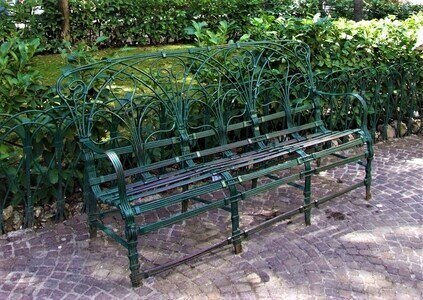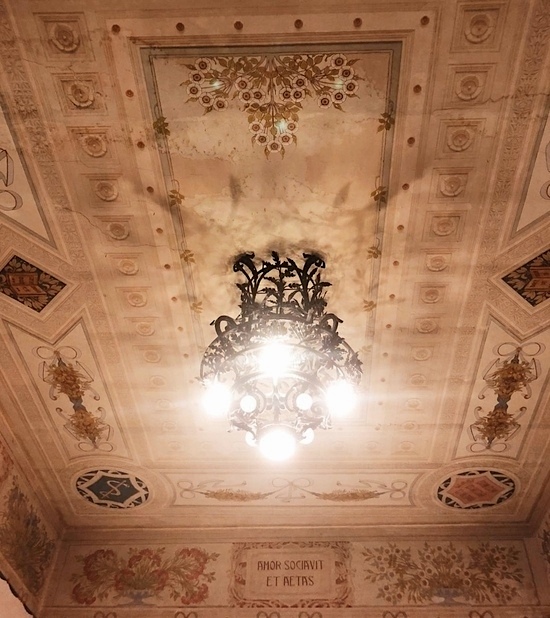Following the Great War, the urban center of Campobasso expanded with the construction of many buildings in Liberty style, a decorative language that spread in Europe and much appreciated by the bourgeois class. Let us guide you on a walk to discover the Liberty style in the city!

The earliest evidence of Liberty style in Campobasso dates back to 1906 with the beautiful decorations that cover the ceiling of the staircase of the Mario Pagano National Convitto (opening photo). Made by the master Giuseppe Dosi on a late nineteenth-century compositional system, these present stylized flowers with the appearance of elaborate linear arabesques. Another easily observable example is that of Villetta Flora in Piazza Pepe. The small garden, restored in 1921, presents wrought iron benches (photo on the side), lampposts and fences in which the curved line motif typical of Art Nouveau dominates, giving new elegance to the urban furnishings.
The near Savoy Theater also preserves refined balustrades on the windows and lamps on the central pediment, made by Giuseppe Tucci and his father Nicola in the years 1926-1927. The motifs are those of intertwined ribbons, flowering shoots, spirals and butterfly wings as in the best European tradition. The Tucci workshop, specialized in iron working and already active at the end of the nineteenth century, represents the fulcrum of the regional Liberty activity of which traces remain in every corner of Campobasso: from the front door of the Villino Ciaccia, to the balconies of the Villa Fusaro, in Viale Elena; from the gate for Palazzo San Giorgio, now the Town Hall, to that of the Villa Comunale De Capoa, ending with the neo-rococo decorations alternating with the decò volutes on the front of Palazzo Grimaldi, in via Marconi.
We conclude our tour in via Marconi with the palace built by the architect Nicola Guerriero, as his residence, in the 1920s. The artist invents the two balconies enriched by female heads in cement-based plastic and the metal canopy supported by shelves that takes the form of flowering branches. Guerriero had also foreseen colored and drawn windows, of which today we have lost all traces, while some painted ceilings survive inside.
Silvia Di Menna
Opening photo: ceiling of the staircase of the Mario Pagano National Convitto, Giuseppe Dosi, 1906 (by I. Di Menna)
Photo in the article: wrought iron bench in Villetta Flora, 1921 (by I. Di Menna)

